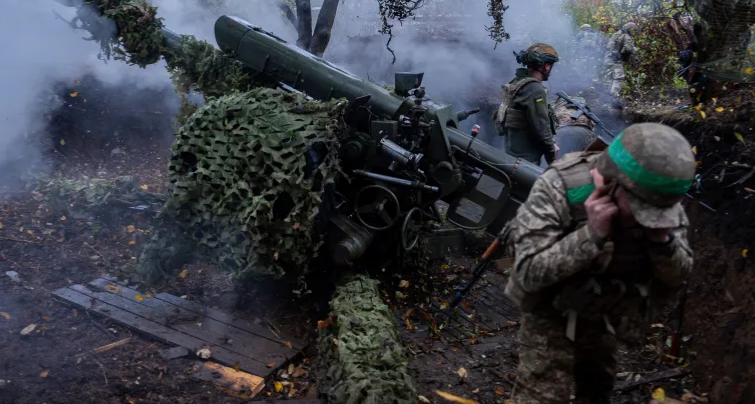
In its ongoing conflict with Russia, Ukraine continues to utilize strategic strikes aimed at crippling vital elements of the Russian war machine. One of the most recent and significant blows came with a targeted attack on a key Russian explosives manufacturer, a move that has implications not only for Russia’s military capabilities but also for the broader geopolitical landscape. This report delves into the specifics of the attack, its ramifications for the conflict, and the broader context within which this event occurs.
Background of the Conflict
The war between Russia and Ukraine, which began with Russia’s annexation of Crimea in 2014 and escalated into a full-scale invasion in 2022, has continued to evolve with each side trying to gain a strategic advantage. Russia’s early overwhelming force has, over time, given way to a protracted conflict, with Ukraine successfully defending and even recapturing key territories. Ukraine, bolstered by Western support in terms of arms, intelligence, and economic assistance, has increasingly targeted critical elements of Russia’s industrial and military infrastructure.
Among the sectors Ukraine has focused on are military supply chains, particularly those that fuel Russia’s war effort. Striking at ammunition and explosives manufacturers is a tactic designed to weaken Russia’s ability to resupply its forces on the frontlines, hindering its offensive capabilities.
The Target: A Key Russian Explosives Manufacturer
In October 2024, Ukrainian forces executed a precision strike on a prominent Russian explosives manufacturing plant. This facility, reportedly located in central Russia, has long been a key supplier of explosives used by the Russian military, not only for its artillery and missiles but also in mining and other industrial applications that contribute to the war economy. The specific target was a plant involved in the production of TNT (trinitrotoluene), a critical component in military-grade explosives.
Ukraine’s strike on the explosives manufacturer comes at a time when Russia is struggling to maintain adequate supplies of ammunition for its military. Western sanctions have exacerbated these shortages, with restrictions on critical materials and equipment used in munitions production. This attack further deepens these logistical problems, making it harder for Russia to maintain the high rate of artillery bombardment that has characterized much of the fighting.
Tactical Precision: How the Strike Was Carried Out
Details of how Ukraine carried out the strike remain classified, but military analysts suggest the use of long-range drones or precision-guided missiles. Ukraine has received a wide range of advanced weaponry from Western allies, including the U.S.-supplied HIMARS systems, capable of hitting targets with extreme accuracy over long distances. The use of drones and missiles has become increasingly common in Ukraine’s strategy, allowing it to strike deep inside Russian territory without risking significant casualties or air assets.
Satellite imagery and local reports indicated significant damage to the explosives plant, with sections of the facility completely destroyed. Russian authorities have so far downplayed the impact of the strike, but unconfirmed reports suggest production has been severely hampered. The plant was an integral part of Russia’s ammunition supply chain, producing high explosives used in both artillery shells and missile warheads. Disruption to its operations will likely slow down Russia’s ability to maintain high levels of firepower in the conflict, a critical element of its military strategy.
Implications for the War
The strike is a part of a larger Ukrainian campaign to degrade Russia’s military-industrial complex. By targeting critical manufacturers and logistics hubs, Ukraine hopes to disrupt Russia’s ability to sustain the conflict over the long term. The loss of a key explosives manufacturer represents a significant blow to Russia’s war effort for several reasons:
- Reduced Ammunition Supply: Explosives are a core component of both artillery and missile production. By striking this facility, Ukraine directly impacts Russia’s ability to produce these munitions. Russia has been relying heavily on artillery throughout the war, with daily bombardments designed to wear down Ukrainian defenses. A sustained reduction in ammunition production could force Russia to alter its battlefield tactics.
- Economic Strain on Russia: The destruction of such a plant has broader economic ramifications. Military production facilities are not easily or quickly replaced. Russia will either need to divert resources to repair the facility or find alternatives, both of which will strain its war economy further. Western sanctions have already made it difficult for Russia to procure critical components, and this strike exacerbates those challenges.
- Boost to Ukrainian Morale and Strategy: Each successful strike inside Russian territory serves as a symbolic victory for Ukraine, boosting morale both within its military ranks and among the civilian population. It also demonstrates the effectiveness of Ukraine’s long-range strike capabilities and undermines Russian narratives of invulnerability.
- Message to Western Allies: Ukraine’s continued success in striking critical Russian infrastructure also sends a clear message to Western allies. It shows that their military aid is being effectively used to weaken Russia and that Ukraine is capable of carrying out complex and impactful operations. This could further bolster support for continued arms shipments and financial aid to Ukraine.
Russian Response and Countermeasures
Russia’s initial response to the strike has been to downplay its significance. State-controlled media have reported that the damage was minimal and that production would resume shortly. However, independent reports suggest the damage was extensive enough to halt production at the facility for the foreseeable future.
Moscow has vowed retaliation for the attack, which could take the form of increased missile strikes on Ukrainian cities and infrastructure. Russia has previously responded to Ukrainian strikes on its territory by launching waves of missile attacks aimed at degrading Ukraine’s power grid and other essential services. Such strikes are designed to demoralize the Ukrainian population and force Kyiv to divert resources toward repairing infrastructure instead of continuing offensive operations.
Long-Term Impact on the War Effort
The long-term impact of Ukraine’s strike on this explosives manufacturer will depend on several factors. If Ukraine can maintain its ability to strike deep into Russian territory, it could force Moscow to divert resources away from the frontlines and into defending key industrial sites. This would reduce pressure on Ukrainian forces in the Donbas and southern Ukraine, where fighting remains intense.
Moreover, continued attacks on Russian military infrastructure could lead to broader logistical issues for Russia, as other factories, supply lines, and storage facilities may become vulnerable. This is especially important given Russia’s reliance on heavy artillery and missile strikes as key components of its military strategy. The degradation of its supply of munitions would severely limit its operational capabilities over time.
Geopolitical Ramifications
Ukraine’s successful strikes on key Russian targets also carry geopolitical implications. Russia has long relied on its military-industrial complex as a source of global influence, supplying arms to a variety of allied nations. Disruptions to this production could limit Russia’s ability to fulfill foreign arms contracts, which would weaken its relationships with allies and reduce its leverage on the international stage.
For Ukraine’s Western allies, this attack serves as further justification for continuing their support. As Ukraine demonstrates its ability to take the fight to Russian soil, Western nations may feel more inclined to provide additional military aid, including more advanced long-range strike capabilities and intelligence support. This would, in turn, further weaken Russia’s ability to sustain its military operations in Ukraine.
Conclusion
The Ukrainian strike on a key Russian explosives manufacturer marks another turning point in the conflict. By directly targeting Russia’s military-industrial capabilities, Ukraine is escalating the pressure on Moscow to either find new ways to resupply its forces or face continued degradation of its war effort. The success of this operation highlights Ukraine’s growing proficiency in conducting long-range, precision strikes, aided by Western intelligence and advanced weaponry.
As the war grinds on, such strategic strikes will likely play an increasingly important role in Ukraine’s efforts to weaken Russia and reclaim its territory. The broader geopolitical consequences of this strike, both for Russia’s economy and its international relations, will only become clearer with time, but it is undoubtedly a blow to Moscow’s military capabilities that will be felt on the battlefield.
